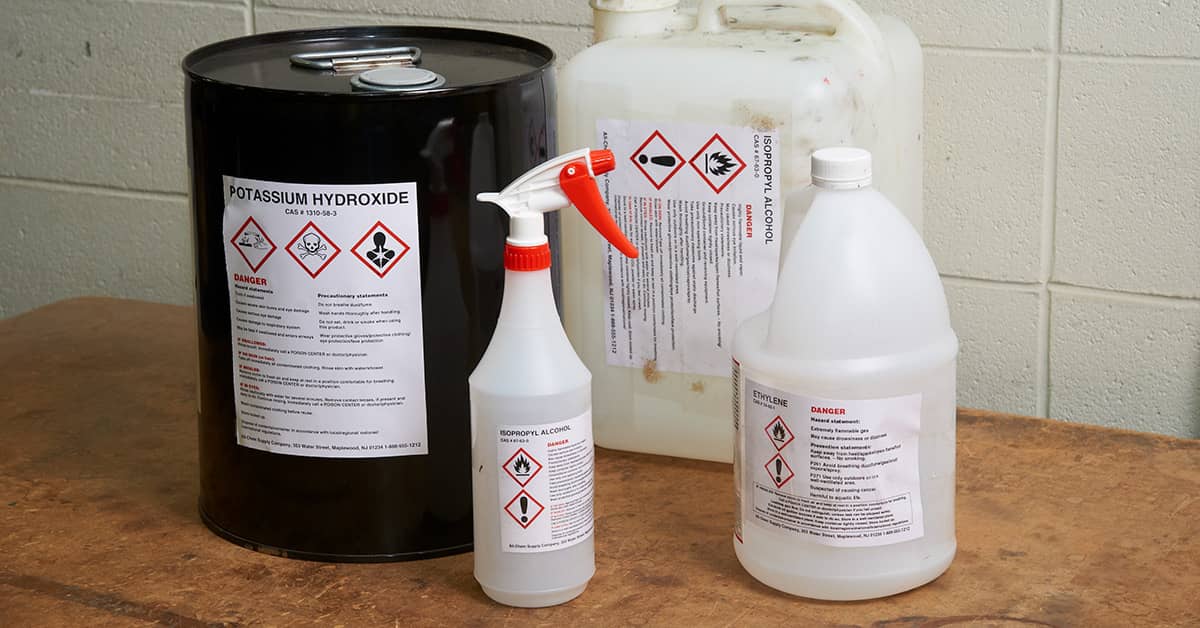Frequently asked questions about HazCom labels
Date Posted: 04/15/2024

OSHA’s Hazard Communication (HazCom) standard requires containers of hazardous chemicals to be properly labeled. Following are some of employers’ most frequently asked questions.
What label elements need to be on a shipped container of hazardous chemicals?
A label on a shipped container must include the product identifier; signal word; hazard statement(s); pictogram(s); precautionary statement(s); and the name, address, and telephone number of the chemical manufacturer, importer, or other responsible party.
If I transfer a chemical into a smaller container, does that container have to be labeled?
If it’s for immediate use, the smaller container doesn’t have to be labeled. Immediate use means that the chemical will be under the control of and used only by the person who transfers it from a labeled container and only within the work shift in which it’s transferred. If it’s not for immediate use, follow the labeling requirements found in 1910.1200(f).
What options do I have for in-house labeling of hazardous chemicals?
There are a few options. The simplest is to use the same elements as required on shipped containers of hazardous chemicals, minus the contact information. So that’s product identifier, signal word, hazard statement(s), pictogram(s), and precautionary statement(s).
Another option is to use the product identifier and words, pictures, symbols, or combination of those, which provide at least general information regarding the hazards of the chemicals. The Safety Data Sheet (SDS) must be readily available in the work area to provide specific information regarding the physical and health hazards of the hazardous chemical.
OSHA also allows the use of the NFPA or HMIS®III system, although it’s important to note that these rating systems do not directly correlate with the HazCom standard classifications. For example, the NFPA rating of 1 (“low”) does not correlate with the HazCom classification of 1 (“high”). Employers must ensure that employees know how to use and understand the alternative labeling systems.
Additionally, OSHA says “Workplace labels must include the product identifier and general information regarding all of the hazards of the chemical(s) even when using the NFPA or HMIS system. In some cases, all hazards are not addressed by a particular rating system (e.g., chronic health hazards), and therefore, hazards not addressed must be communicated by words, pictures, symbols, or a combination thereof in addition to the NFPA or HMIS rating system.”
It’s difficult to label small containers. What options are there?
Labeling can be done with pull-out labels, fold-back-labels, tags, or other methods. OSHA says, “All shipped containers must be labeled with the required information in 1910.1200(f). Small container labels must contain all the information listed in paragraph (f); there are no exemptions from labeling due to the size of the container.”
Can black diamonds be used around pictograms on labels for domestic shipment?
No, they must have red borders when being shipped, regardless of location. OSHA only allows the use of black borders on pictograms for in-house labels.
How Safety Management Suite Can Help
If you’ve got hazardous chemicals, you probably need to maintain a list of those chemicals and provide Safety Data Sheets for your employees. The Chemical Center in the J. J. Keller® SAFETY MANAGEMENT SUITE helps you find and save SDSs in your own binders. It also helps you create labels from your stored SDSs.
E-mail Newsletter
Sign up to receive the weekly EHS Insider email newsletter for safety articles, news headlines, regulatory alerts, industry events, webcasts, and more.